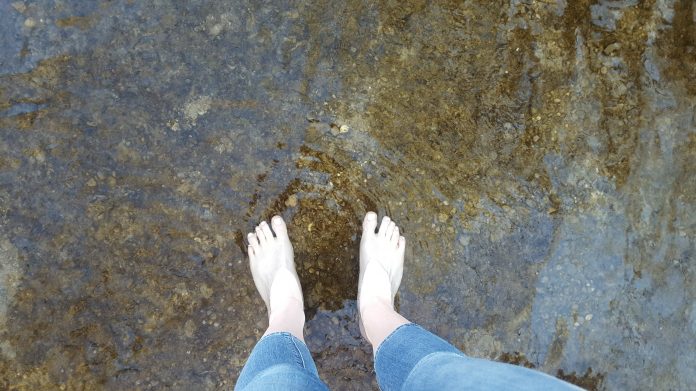Officially, spring doesn’t begin until March 19. However, the beginning of daylight savings time and a few days of warmer weather have those of us in Northeast Ohio feeling like its already here. That’s especially true for my daughter, Vayda.
Between building forts, riding her four-wheeler, catching crayfish, swinging on the tire swing, jumping on the trampoline and wandering through the woods with her dogs, Vayda hasn’t had time for much that doesn’t offer the allure of an outdoors adventure. This spring she’s taken a special interest in a small stream that feeds into the larger creek in my parents’ backyard.
Watching her wade in the likely-cold water, I started to ponder how healthy the small stream and larger creek are. What indicates a healthy creek v. one that needs improvements to thrive?
Determining whether your creek is healthy
There are a number of factors that can indicate whether or not a creek is healthy. By learning what to look for landowners can monitor the health of waterways cutting through their property and respond to any indications of impairment sooner.
Checklist
- Riparian vegetation. Healthy vegetation along streambanks slow down erosion and provide shade, food and shelter for aquatic macroinvertebrates (such as insects, crustaceans (crayfish and others), mollusks (clams and mussels), gastropods (snails), oligochaeta (worms)). Steep, bare spots along the edges of a stream may indicate stretches of increased erosion and decreased biodiversity.
- Stream temperature. Temperature determines the kinds of organisms that can live in creeks and streams. Many freshwater fish, amphibians and invertebrates dwelling in streams require cooler temperatures to survive (under 70F). Additionally, warmer water temperatures can influence water chemistry as chemical reactions increase at higher temperatures.
- Water color. Clear water is the most desirable color but doesn’t necessarily mean clean as some pollutants are not colored. Brown water is an indication of sediments in the water, but not necessarily a bad sign. All streams contain sediment suspended in the water, determining their turbidity level. Many turbid streams are abundant with life. Green water is generally a sign of excessive algae and poor water quality. A rainbow or oily sheen on the water is an indicator of poor water quality.
- Algae growth. Scattered algae indicate a healthy waterway, whereas, matted or hairy algae can mean poor health. An algal bloom indicates excess nutrients, which may have come from fertilizers, manure or leaf litter.
- Foam. Some waterways have a natural foam that smells earthy or fishy and will appear white, cream-colored or brown. It will appear more pillowy than sudsy. Foams that smell like soap or perfume and are white and sudsy in appearance come from pollution from detergents.
- Riffles, runs and pools. A mix of riffles, runs and pools in a waterway provides the ideal habitat for aquatic life. Riffles are the shallow sections of a stream where the water breaks over cobbles, boulders and gravel. Runs are deeper sections of streams where water is flowing rapidly, generally downstream from riffles. Pools are the deepest and slowest moving sections of a stream.
- pH level. The ideal pH for a stream is between 6.5 and 8.5, with the optimum pH around 7.4. Water that measures lower than 6.5 is too acidic and water that measures over an 8.5 can make a creek inhospitable to aquatic life.












